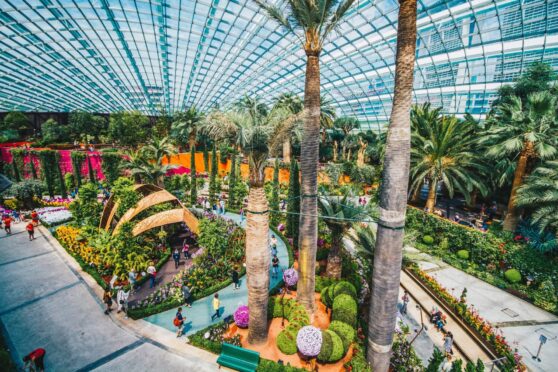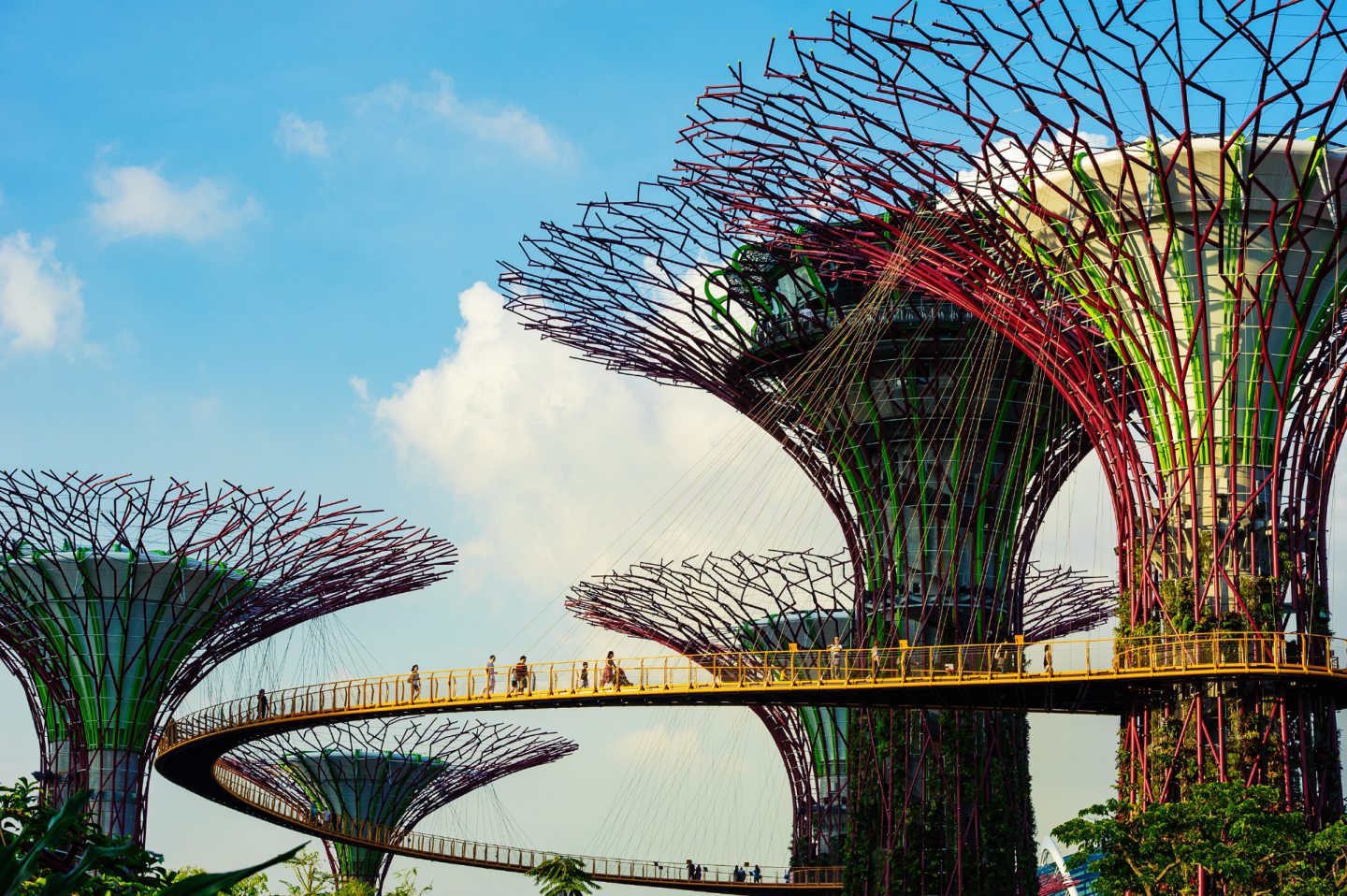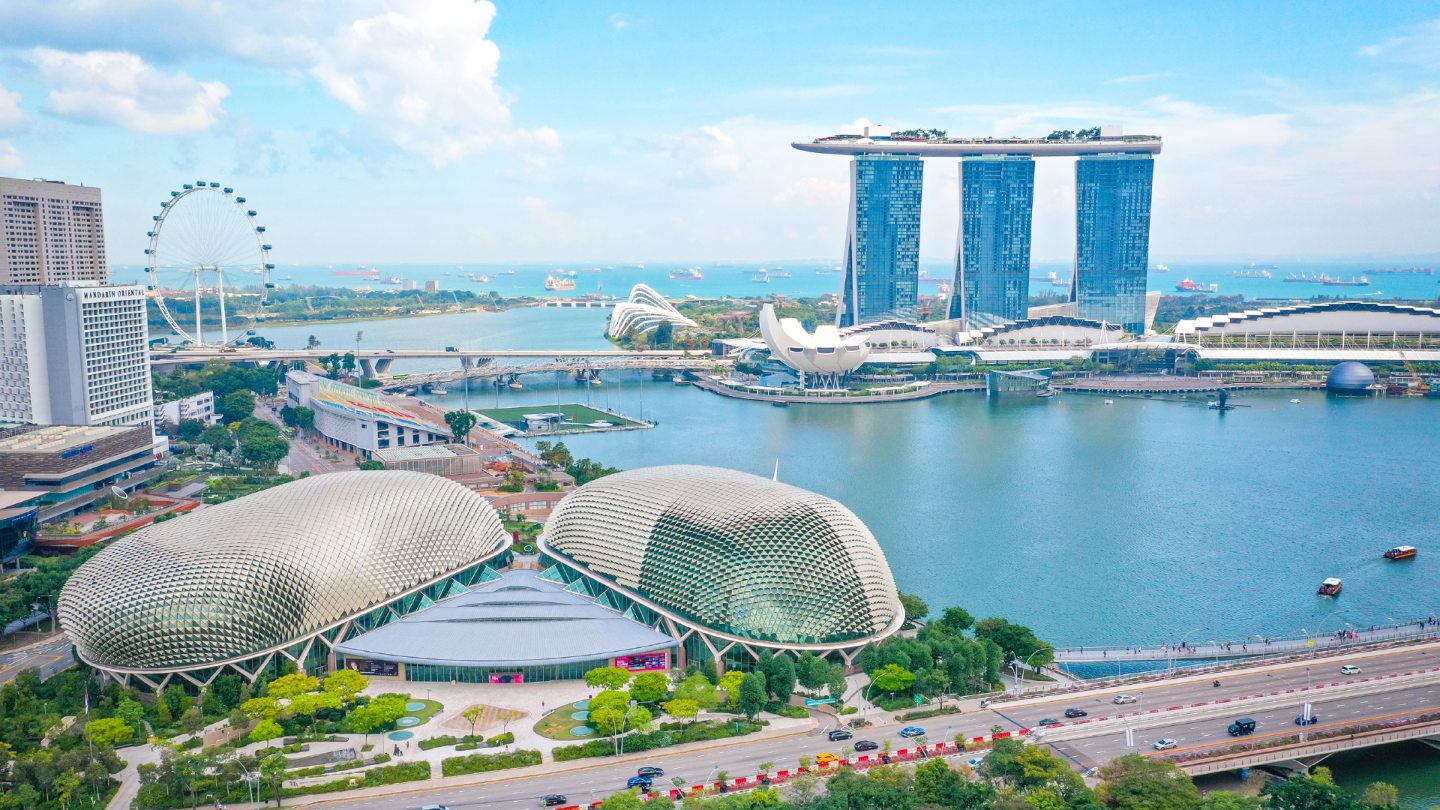
If you want to take green transportation up a gear, there are plenty of cycle lanes to pedal along. Plans to build 800 miles of safe cycle routes will triple the current network’s coverage by 2030 – not bad for a nation 31 miles across and 16 miles from north to south.
I pinch a delicate mint leaf from a row of potted plants. “The restaurant next door uses our herbs in their dishes,” my guide, Sarah, tells me. I’m on a rooftop seven floors above a busy shopping mall but the garden is as abundant as anything on the ground.
The urban farm approach to growing food in confined spaces in Singapore, a self-proclaimed “city in a garden”, opens my eyes to the possibilities of sustainable living in a big city.
In a city-state where plants and skyscrapers collide, rooftop farms might not sound like a revolutionary idea, but the brains behind Edible Garden City have started a small movement of horticultural high-rises. The team has created 260 urban gardens in just 10 years. The purpose-built plant-based pantries are designed to revolutionise the country’s food supply. Currently, Singaporeans grow 10% of the food they eat, a figure the government hopes to change to 30% by 2030.
Sarah is proud to let me know the garden I’m visiting at Funan features in plans for the building, and other farms can be found at Raffles City and Queenstown. Both are open to volunteers Monday to Thursday. Tours and workshops are also available.
I wonder what other eco-friendly surprises lie behind Singapore’s hi-tech façade…My accommodation, the Parkroyal Collection Pickering, in Singapore’s Downtown Core, takes urban nature to the next level. Plants in the tiered gardens cover more than twice the hotel’s total floor area.
Walking from the lobby to my airy, modern room, open-sided corridors negate the need for air conditioning. The narrowness of the building is designed to maximise the daylight reaching internal spaces – no energy-sapping light-fittings needed. And the hotel was the first in Singapore to use recycled plastic as a building material.
The combination of glass and greenery is part of a plan to build a greener city-state, where neighbourhoods are temperature-controlled without air conditioning, thanks to the world’s largest fully underground district cooling system.
For exploring the city, Singapore provides clean transport options. There’s the Mass Rapid Transit system, or MRT, with a Singapore Tourist Pass or STP offering unlimited travel from £5.60 a day.
But you needn’t travel far to see green spaces. Some of the most iconic city-centre buildings help to make Singapore the eco-friendly holiday destination it is today. At Gardens By The Bay, it’s possible to see plants from far-flung destinations.
The largest greenhouse in the world, the Flower Dome envelopes guests and plants. Next door, the Cloud Forest hosts the world’s second-tallest indoor waterfall.
The greenhouses collect rainwater that is circulated in a cooling system connected to “Supertrees”. The 25 to 50-metre-high forest at Supertree Grove is designed to disperse heat and harvest solar energy, while lighting up the skies. You can view the super structures during the free evening light shows. Pay S$8 (£4.50) to stroll along the 22-metre-high Skyway.
Filling up your plate is sustainable too. For a high-end dining experience, Labyrinth is a must. The one-Michelin-starred “new Singaporean” restaurant sources 70% of its ingredients from Singapore (90% before the pandemic).
Dishes include the signature chilli crab ice cream, Ang Moh chicken rice and Rojak – 12 herbs grown by Edible Garden City and served in a cross between a tree trunk and half-coconut.
Native cocktail bar is the go-to destination for responsible drinking with alcoholic concoctions all made from regional ingredients.
Your final stop simply has to be Singapore’s only garden spa, Aramsa, situated in a bustling public park where runners and yogis share the great outdoors with bathing otters.
My treatment room faces a garden used to grow pandan and ginger for teas. After I change into a robe, my masseuse works her magic on my upper back using organic oils. The Aramsa Touch massage is the perfect end to a sustainable escape.
P.S.
If you want to take green transportation up a gear, there are plenty of cycle lanes to pedal along. Plans to build 800 miles of safe cycle routes will triple the current network’s coverage by 2030 – not bad for a nation 31 miles across and 16 miles from north to south.
Factfile:
For more info go to visitsingapore.com. For updates on Vaccinated Travel Lane flights and entry requirements go to safetravel.ica.gov.sg.

Enjoy the convenience of having The Sunday Post delivered as a digital ePaper straight to your smartphone, tablet or computer.
Subscribe for only £5.49 a month and enjoy all the benefits of the printed paper as a digital replica.
Subscribe © Press Association Images
© Press Association Images © Press Association Images
© Press Association Images